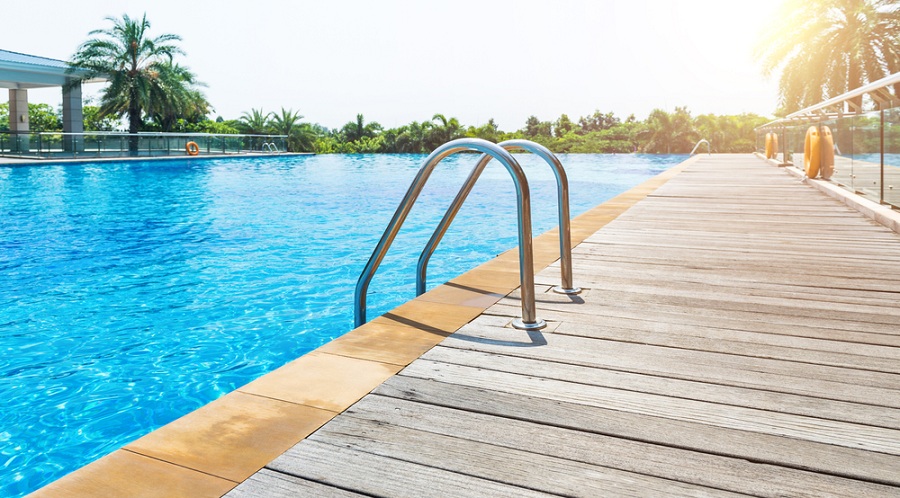How Much Does a Pool Cost To Design, Install, Maintain & Run?
A swimming pool is a large investment that should last for many years.
However, there are numerous costs associated with maintaining a pool correctly.
This guide covers all aspects of the cost of installing, operating, and maintaining your pool for the long term.
In it, we provide specific budget figures based on the latest US averages in our industry. We also recommend many ways to minimize your total cost of ownership.
We hope this short guide will serve as a total cost template to keep your budget safe.
Initial Cost
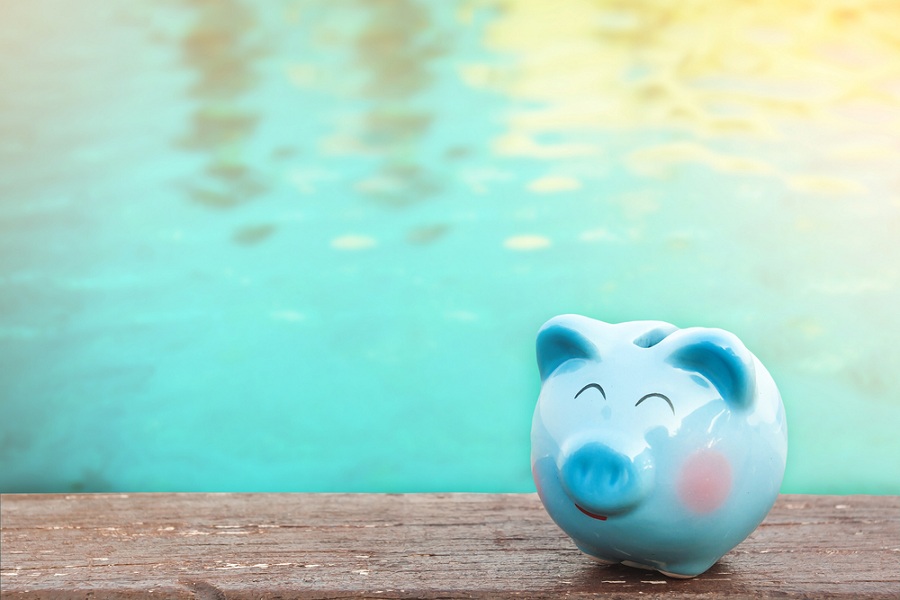
The first and by far largest cost factor to consider when determining the cost of owning a pool is the initial purchase & installation cost.
Depending on the size & location of the pool, the materials used, and the features desired, your upfront pool cost will range from $5,000 for an inexpensive above-ground pool to $100,000+ for a custom-designed in-ground pool with water features, a spa, and a heating system.
Above-ground pools are on the lower end, typically costing between $5,000 and $40,000 to install and equip. The amount will vary depending on the type & size (gallons) of pool you choose, the structure and decking required to make it safe, and optional features.
Larger above-ground pools require complex deck structures to contain them, and others are partially submerged in the ground requiring a concrete foundation.
In-ground pools are typical twice the size and about double the price of above-ground pools but last much longer because they are contained in the ground and typically made of durable materials like reinforced fiberglass, cement, gunite, and steel.
In-ground pools are usually built using precast panels or cement poured into place and reinforced with rebar. Installation requires special equipment and labor, plus more complex piping and electrical hookups.
A typical American in-ground pool costs anywhere from $20,000 to $100,000 depending on the pool size, shape and design complexity, materials, optional features, and the surrounding decking/patio.
BUYING TIP: It’s important not to overbuy when installing a pool. Try to buy the smallest pool that will give you what you want 90% of the time. Making that final 10% possible – especially unique water features, architectural details, special materials, and heating/cooling equipment – can often double your price.
Pool Size, Shape & Optional Features: Total Cost Impact
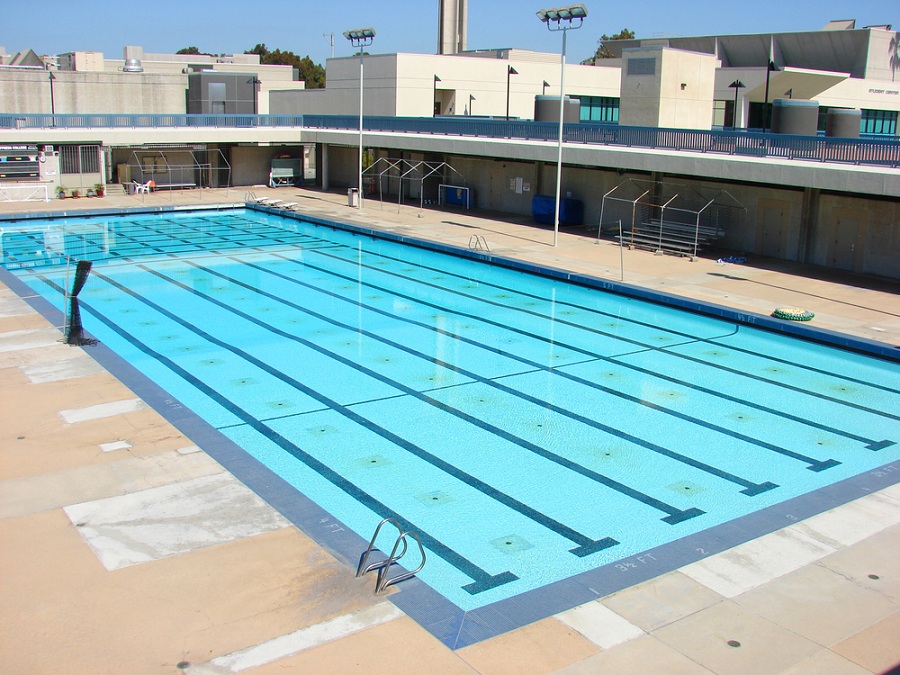
Pool size and features also directly impact the downstream costs of maintaining, repairing, and operating a pool long-term.
For example, a shallow rectangular single-depth pool is easier and less expensive to clean than a complex-shaped, multi-layered deep pool.
The size of your pool will also affect the amount of maintenance required. A larger pool requires a more expensive filter and pump equipment, more cleaning, and more effort to upkeep.
Maintenance & Operating Costs
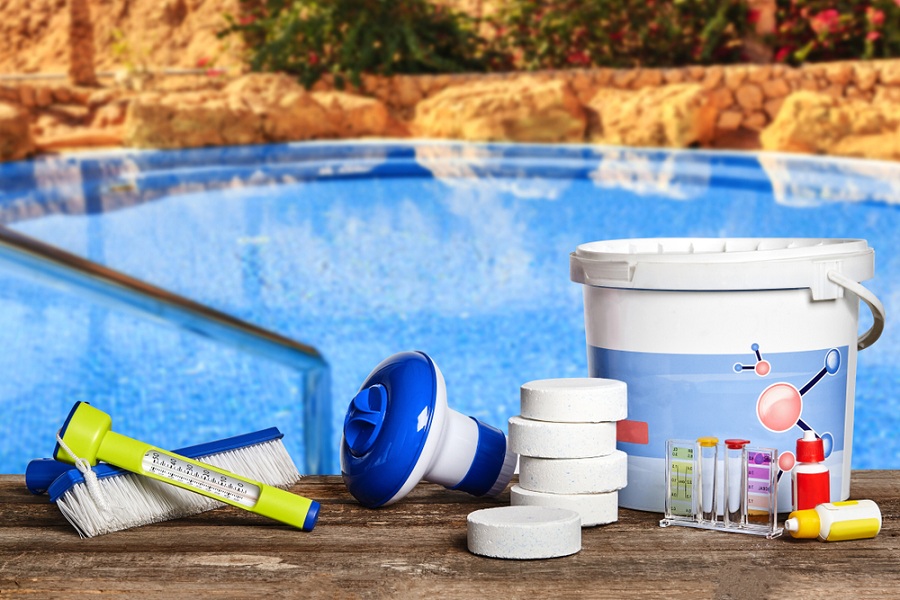
Contrary to what most people think, properly maintaining a pool correctly is not expensive. Nor does it require professional help most of the time.
There are chemicals, pool cleaners, pool brushes, filters, pumps, and other equipment that need to be purchased, installed, and maintained, but doing this is something anyone can do on their own as long as they have a bit of discipline.
Pool Cleaning Gear
To properly clean your pool and keep it clean, you will need to buy a few basic gears, including a pool cleaner, a pool skimmer, a pool brush, and a pool vacuum.
Automatic pool cleaners typically cost between $200 and $1,000 and will last years without requiring expensive maintenance.
Most automatic pool cleaners attach to your pool pump system, but robotic pool cleaners and surface pool skimmers are standalone. Either way, you will need to maintain and repair these every other year or so to keep them running. You can do most repairs yourself, with the most commonly-replaced parts costing $10-$100 depending on the model.
Pool skimmers remove floating debris and are typically installed in the pool itself. They last a long time and only require regular emptying of their filter baskets.
We recommend purchasing a simple suction-side pool vacuum to sweep up any loose sand and debris your cleaner and skimmer will miss. These cost about $100 online and attach to your pool drain line or skimmer. Easy to use and rarely fail.
Finally, a good pool brush + net kit that will last years costs less than $50.
Utility Costs
In addition to pool equipment, there are regular expenses such as electricity, water, and gas. These costs vary depending on where you live, how large your pool is (gallons), and what kind of heating and cooling equipment you use.
On average, most inground pools add about $30-50/mo to the cost of your water and utility bill – but only during the season. If your home has solar panels, make sure you account for the additional power requirement for your pool pump and heater.
Chemicals
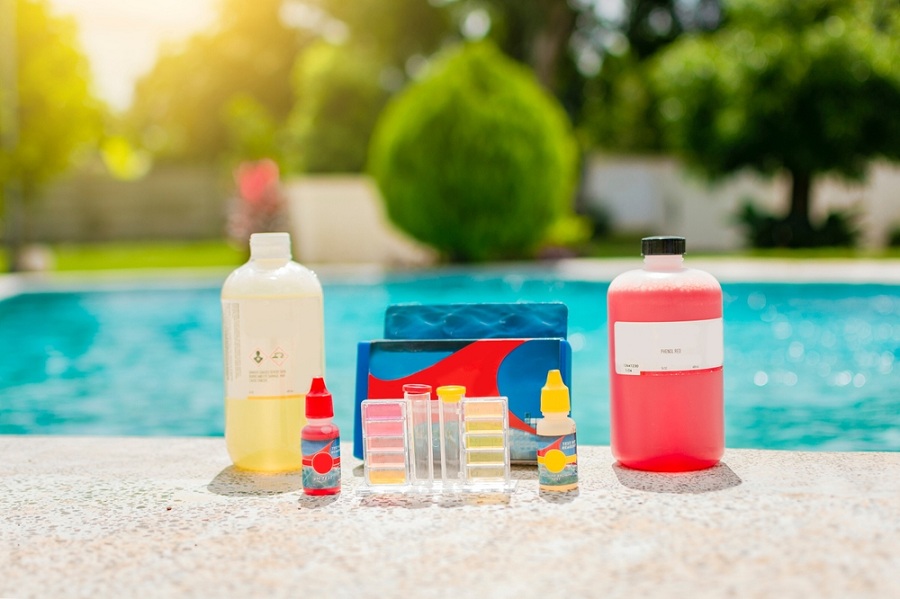
Swimming pools require chemicals to clean the water. Most pools come with a chemical package that contains everything you need to treat the water. Chemicals must be replenished periodically to prevent algae growth.
Pool chemicals typically run $10 to $50 per month in-season, for example.
To adjust your own pool chemicals, you will need a pool water test kit. We recommend using inexpensive paper strips or digital test kits that cost less than $25 online and last multiple seasons.
Pool Pump
Swimming pools require pumps to circulate the water. Pumps are either electric or gas powered. Electric pumps run off electricity and are relatively inexpensive. Gas-powered pumps are more costly, but they provide greater power.
Pool pumps last many years. Replacing one yourself isn’t that difficult, with parts costing $250-$500 in most cases.
Water Filter
Swimming pools require a water filter system to remove impurities from the water. Water filter systems are necessary to protect against bacteria and viruses.
Most swimming pools come equipped with a filter system that cleans the water. Filters need to be cleaned once a month or so and replaced every three to five years.
Most pool water filters cost $100-$300 to replace and require no special tools or skills.
Hiring Help
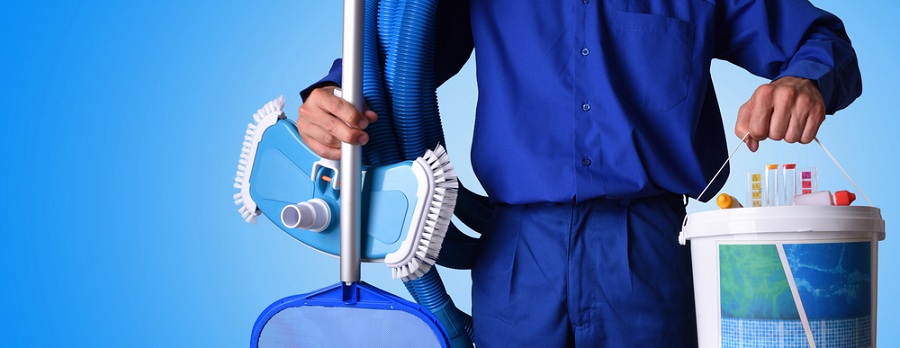
When hiring a pool service, it is important to find out what services are included in the price. Some companies charge per hour, while others offer a flat rate per visit.
It is also important to know whether the company offers liability insurance coverage. This is especially true if you hire people to do work outside their normal job description.
Insurance Coverage
Most homeowner policies will require you to maintain liability insurance if you own a pool. The policy covers any injuries that occur due to negligence.
Some policies cover accidental damage, such as broken glass or leaks. Others provide additional coverage for items such as landscaping and fences.
Pools need to be inspected regularly to ensure they are safe. Some states require annual inspections.
Regular Maintenance Labor
After purchasing a pool, you will need to perform regular maintenance. It is important to schedule regular visits to the pool so that problems can be addressed before they become major issues.
This includes checking the filter, testing the pH level, and inspecting the pool walls.
We’ve published several excellent resources on this site to help you with this task. Don’t worry; it’s not complex.
Repairs
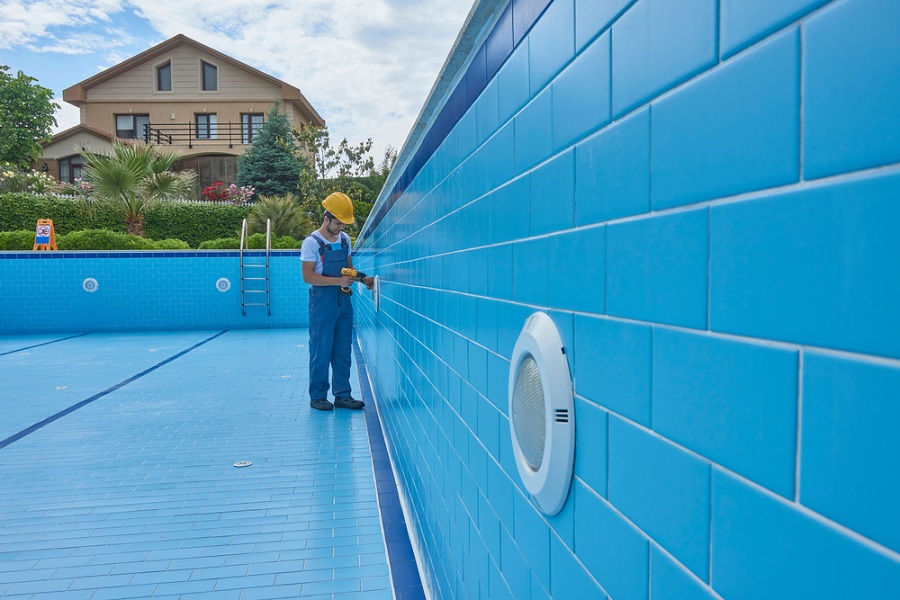
Repairs will eventually be necessary. For example, if you notice a leak, you need to call a professional immediately. Pool pumps eventually wear out. And filters and pool cleaners break.
However, it is important to note that most pool repairs can be done yourself using simple hand tools and materials available from any big-box store.
For example, replacing a pump can be done easily.
Other repairs may require the assistance of a contractor. For example, if the pool liner has holes, you may want to contact a pool repair specialist.
Minimizing The Total Cost Of Swimming Pool Ownership
Owning a swimming pool requires a significant investment. However, there are ways to reduce the overall cost of owning and operating a swimming pool.
First, you can reduce the initial purchase price of a pool by shopping around. There are many different types of pools available. Some are more expensive than others.
Second, you can save money by purchasing a used pool. Many people sell their old pools at yard sales or online auction sites.
Third, you can lower the maintenance cost by installing solar panels on your roof. Solar panels generate enough energy to keep your pool running without any additional input from you.
Fourth, you can reduce the cost of chemicals by buying them in bulk. Buying large quantities of chemicals reduces the cost of each individual bottle.
Finally, you can reduce the overall cost of ownership by choosing a low-maintenance pool design. Low-maintenance designs do not require frequent cleaning and maintenance.
Impact of Pool Type on Cost
There are several different types of pools available for homeowners. Each has its own advantages and disadvantages. Here is a brief description of the most popular types and how pool costs listed above are impacted:
Above Ground Pools: Cost Implications
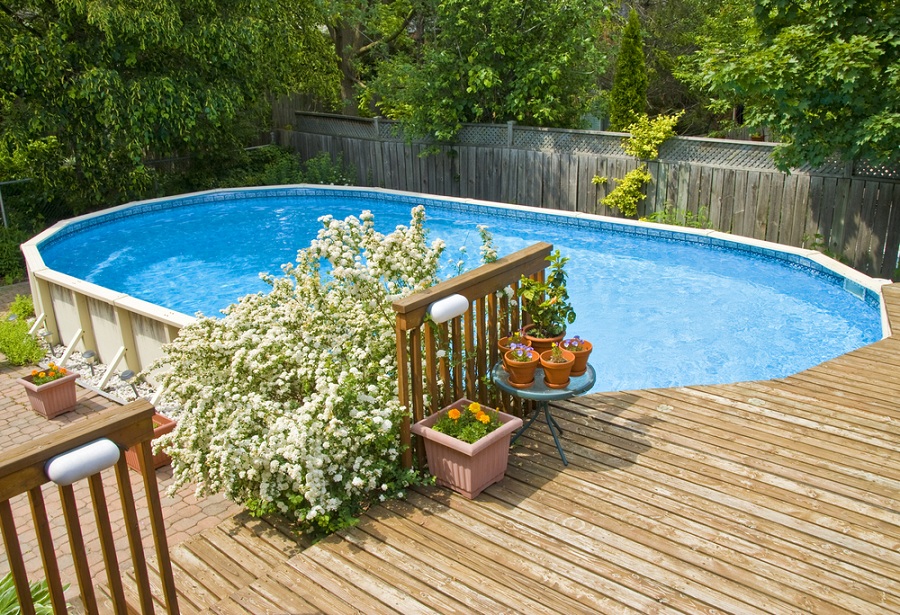
An above-ground pool is the most common type of pool. Above-ground pools are easy to construct and install. They also have an appealing appearance.
However, above-ground pools tend to leak. Leaks can cause serious damage to the surrounding area if left untreated. That said, preparing a leak is normally easy to do, and parts typically cost less than $100.
In addition, above-ground pools are exposed to the elements, which means their water lines and equipment will fail more frequently.
In-Ground Pools: Cost Implications
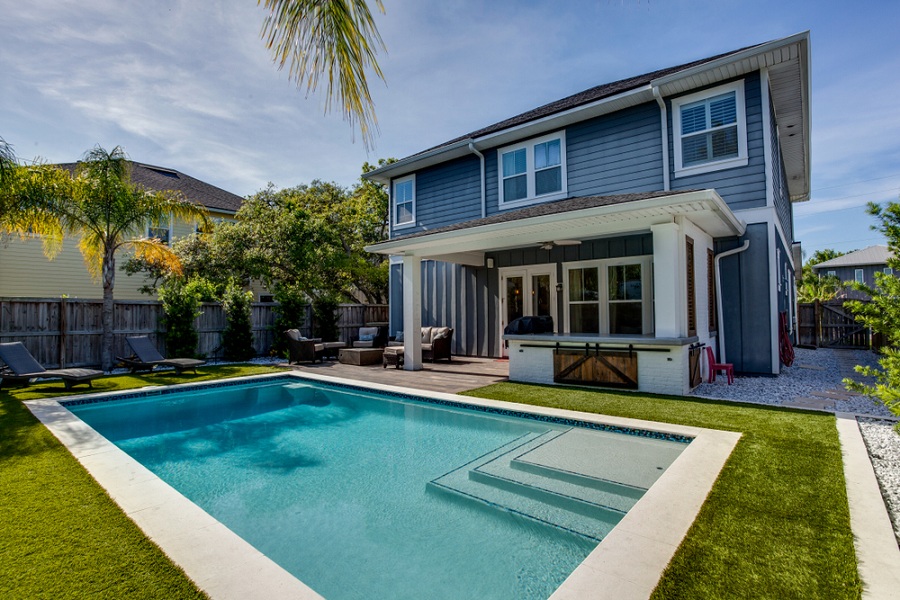
An in-ground pool is another popular choice among homeowners. Concrete in-ground pools are durable and long-lasting. They are also very attractive.
They are also quite heavy. Because of this, concrete pools are usually installed underground.
The underground installation provides protection from harsh weather conditions. It also helps prevent vandalism.
The downside to concrete pools is that they require diligent surface cleaning and maintenance. You must constantly clean and seal the surface of the pool. In addition, regular inspection is required to ensure proper drainage.
Finally, when in-ground pools develop leaks – either in piping or through the walls – it can be quite expensive to repair. $1,000 to $3,000 per major leak is not uncommon. Thankfully, this is pretty rare.
Pool Design: Cost Implications
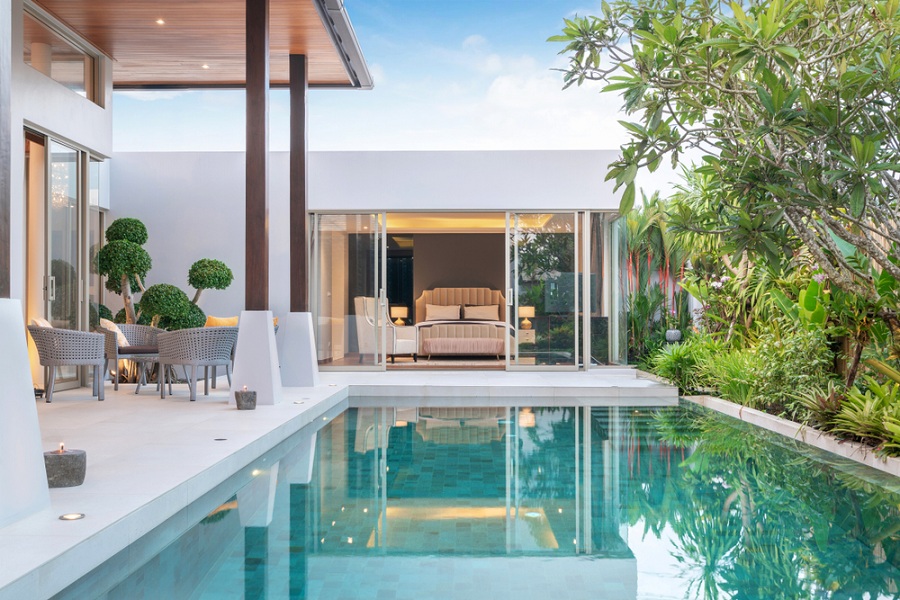
The design of a pool determines how much money you spend on owning it. There are many different styles of pools available today. Some are simple, and others are complex. Here are some of the most common pool designs:
Round Pools
Round pools are the simplest style of pool. They are circular in shape. They are usually made out of fiberglass or acrylic. Round pools are ideal for small spaces. They are also great for families because children can play safely around them. Round Pools cost around $10,000-$15,000.
Rectangular Pools
Rectangular pools are rectangular in shape. They are perfect for large yards. Rectangular pools are also great for entertaining guests. You can place your pool in the middle of the yard and invite people over for parties. Rectangular pools cost around $20,000-$30,000.
L-Shape Pools
L-shaped pools are shaped like an “L”. They are great for entertaining guests. An L-shaped pool can fit up to four adults at once. They are also great when you have a lot of space. L-shaped pools cost around $25,000-$40,000.
U-shape Pools
U-shaped pools are similar to L-shaped pools. They are shaped like a “U”. They are also great places to entertain guests. U-shaped pools are great for kids because they allow them to play freely without getting hurt. U-shaped pools cost around $35,000-$50,000.
Tubular Pools
Tubular pools are shaped like tubes. They are great for swimming laps. Tubular pools are also great for fitness training. They are the best choice for those who want to train their core muscles. Tubular pools cost around $40,000-$60,000.
Spa Pools
Spa pools are pools that feature hot tubs. Spa pools are great for relaxing after a long day. They are also great options for entertaining guests. Adding a spa to your in-ground pool is expensive, however.
Typical cost: add another $10,000-$20,000 for the installation and separate pump, filter, and heating system required. In addition, spas must be maintained and repaired as a separate system.
FAQs
Q: How do I know which size pool is right for me?
A: This depends on several factors, such as the number of people living in your home, how you plan to use your pool, how often you plan to swim, and many others. To keep total cost down, we recommend buying the smallest and least complex pool that will meet most, but not every, need and whim you have -whenever possible.
Q: Do all types of pools require maintenance?
A: Yes. All pools require regular maintenance. The frequency of this varies depending on the type of pool you own. For example, if you own a spa pool, it requires more frequent maintenance than a simple backyard pool.
Q: Can I install my own pool?
A: Yes, but it might be difficult. Installing a pool is a complicated process. You will need to hire a professional contractor to assist you.
Q: How much does a pool installation cost?
A: Depending on the pool size, installation alone could cost between $10,000 and $20,000. We strongly recommend using professional, credentialed pool installers with outstanding reputations who have been installing pools for at least 5 years locally.
Q: How can I save money when installing a pool?
A: One way to save money is to purchase a prefabricated pool. These are prebuilt pools that come fully assembled. They are ready to go once you have purchased them. You don’t need any special tools to assemble them either.
Q: Which type of pool is better – inground or above ground?
A: Both types of pools are great. Above-ground pools are cheaper to buy and easier to clean and maintain. On the other hand, inground pools last longer and are more efficient in heating and cooling than an above-ground pool.
Q: What is the difference between a vinyl liner and a fiberglass liner?
A: Vinyl liners are made from polyvinyl chloride (PVC). Fiberglass liners are made from glass fibers contained in a resin. PVC liners are generally less expensive than fiberglass liners. However, they tend to wear faster.
Q: What type of pool liner is most popular?
A: Most homeowners choose vinyl liners because they are easy to install. Vinyl liners are also very affordable and simple to repair.
Q: What about pool covers?
A: Pool covers protect the pool from debris while keeping heat inside. Most solar pool covers cost a few hundred dollars at most. Automatic-retracting pool covers and safety covers that can hold the weight of a person typically cost north of $3,000.
Q: Are there different types of pool covers?
A: Yes! There are three main types of pool covers: floating, retractable, and fixed. Floating covers float on top of the water. Retractable covers move into an open position when needed. Fixed covers stay put at all times.

